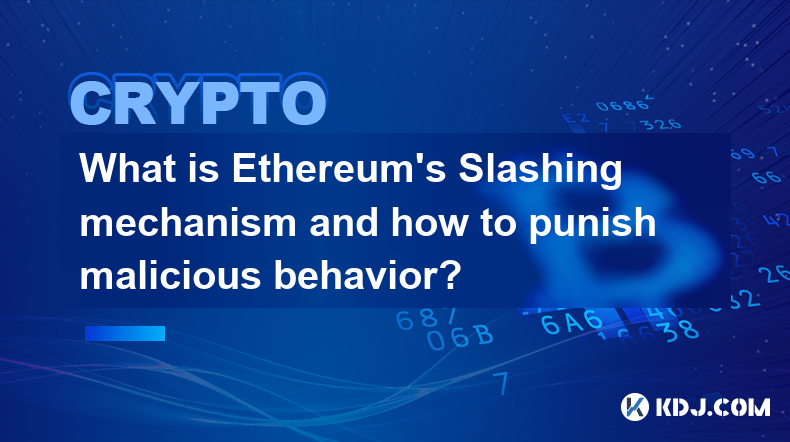-
 Bitcoin
Bitcoin $82,809.3238
0.26% -
 Ethereum
Ethereum $1,788.3498
0.19% -
 Tether USDt
Tether USDt $0.9996
0.01% -
 XRP
XRP $2.1389
1.52% -
 BNB
BNB $593.8056
0.46% -
 Solana
Solana $117.8409
0.68% -
 USDC
USDC $1.0000
0.00% -
 Dogecoin
Dogecoin $0.1682
0.82% -
 Cardano
Cardano $0.6524
0.86% -
 TRON
TRON $0.2376
-1.26% -
 Chainlink
Chainlink $12.6976
1.00% -
 UNUS SED LEO
UNUS SED LEO $8.9647
-4.65% -
 Toncoin
Toncoin $3.2406
-4.07% -
 Stellar
Stellar $0.2542
-1.59% -
 Avalanche
Avalanche $17.9641
-0.09% -
 Sui
Sui $2.2083
-0.33% -
 Shiba Inu
Shiba Inu $0.0...01215
-0.31% -
 Hedera
Hedera $0.1598
-1.67% -
 Litecoin
Litecoin $82.5025
-1.03% -
 Polkadot
Polkadot $3.9190
-3.38% -
 MANTRA
MANTRA $6.2529
-1.42% -
 Bitcoin Cash
Bitcoin Cash $299.2452
-0.20% -
 Bitget Token
Bitget Token $4.4733
-0.84% -
 Dai
Dai $1.0001
0.03% -
 Ethena USDe
Ethena USDe $0.9991
-0.02% -
 Pi
Pi $0.6490
24.27% -
 Monero
Monero $216.2546
0.14% -
 Hyperliquid
Hyperliquid $11.5189
-0.61% -
 Uniswap
Uniswap $5.8323
0.52% -
 OKB
OKB $50.3685
5.29%
What is APT? One article to understand whether APT coins are still worth investing in now?
Aptos (APT), founded by ex-Meta employees, is a scalable and secure layer-1 blockchain platform designed for high throughput and low latency.
Oct 03, 2024 at 02:17 am

Understanding APT and its Investment Potential
1. What is APT?
Aptos (APT) is a layer-1 proof-of-stake (PoS) blockchain platform designed for scalability, security, and low latency. Founded by former Meta employees, Aptos aims to address the limitations of existing blockchains, such as scalability, consensus mechanisms, and transaction throughput.
2. Key Features of APT
- Parallel Execution Engine: Aptos utilizes a parallel execution engine called Block-STM, which enables transactions to be processed concurrently, significantly improving throughput.
- Flexible Metadata Framework: Aptos allows developers to define custom metadata and storage structures for their applications, providing adaptability and flexibility.
- Move Programming Language: Aptos is built on the Move programming language, a type-safe and resource-aware language designed for blockchain development.
- Built-in Virtual Machine: Aptos comes with its own virtual machine (AptosVM), optimized for high performance and low gas fees.
3. Investment Potential of APT
The investment potential of APT depends on several factors, including:
- Development Team: Aptos is backed by a strong development team with extensive experience in the blockchain industry.
- Technology: Aptos's scalability, security, and low latency make it a promising platform for various applications, such as DeFi, NFTs, and gaming.
- Partnerships: Aptos has established partnerships with leading exchanges and projects, indicating industry support.
- Community: Aptos has a growing and engaged community, which can contribute to its long-term success.
4. Current Market Conditions
As of February 8, 2023, the price of APT is approximately $9.13, with a market capitalization of over $840 million. The APT token is available for trading on major cryptocurrency exchanges.
5. Is APT Worth Investing In Now?
The decision of whether or not to invest in APT is subjective and depends on individual risk tolerance and investment strategy. However, based on the factors discussed above, APT has potential for growth in the long term. Its strong development team, innovative technology, and growing community make it an attractive investment option for those interested in blockchain technology and its applications.
Conclusion
Aptos (APT) is a promising layer-1 blockchain platform with features designed for scalability, security, and low latency. Its investment potential lies in its strong development team, innovative technology, and growing community. While market conditions can fluctuate, APT remains a potential investment for those looking to capitalize on the growth of blockchain technology.
Disclaimer:info@kdj.com
The information provided is not trading advice. kdj.com does not assume any responsibility for any investments made based on the information provided in this article. Cryptocurrencies are highly volatile and it is highly recommended that you invest with caution after thorough research!
If you believe that the content used on this website infringes your copyright, please contact us immediately (info@kdj.com) and we will delete it promptly.
- A cryptocurrency whale has suffered a staggering loss of $2.17 million following a major crash of the $ACT token.
- 2025-04-05 22:20:12
- title: GameStop Secures $1.5 Billion for Bitcoin Investment
- 2025-04-05 22:20:12
- Amid the Delicate Dance of Digital Assets, a New Player Enters the Stage—global uncertainty.
- 2025-04-05 22:15:12
- Here Is How Crypto Markets Might React to Trump's 'Liberation Day'
- 2025-04-05 22:15:12
- Shiba Inu (SHIB) Needs no Introduction
- 2025-04-05 22:10:12
- Bitcoin (BTC) Price Drops as Funding Rates Turn Negative, But Experts See Potential for Recovery Due to Corporate Buyouts and Long-Term Holder Accumulation
- 2025-04-05 22:10:12
Related knowledge

What is Ethereum’s Slashing mechanism and how to punish malicious behavior?
Feb 20,2025 at 03:08am
Key PointsOverview of slashingDifferent types of slashing in EthereumIncentives and consequences of slashingIdentifying and reporting slashed validatorsOngoing discussions and potential improvementsEthereum's Slashing Mechanism: Punishing Malicious BehaviorEthereum's slashing mechanism is an essential tool for ensuring network security and punishing mal...

What is the verifier node of Ethereum and how to become a verifier?
Feb 19,2025 at 06:00pm
The Verifier Node of Ethereum: A Comprehensive GuideKey Points:What is a Verifier Node?How to Become a Verifier NodeResponsibilities and Rewards of a Verifier NodeMinimum Requirements for Becoming a Verifier NodePotential Difficulties in Running a Verifier Node1. What is a Verifier Node?A Verifier Node is an independent entity on the Ethereum network th...

What is Ethereum’s staking, and how to participate and earn money?
Feb 19,2025 at 04:37pm
Key Points:Understanding Ethereum's Staking MechanismSteps to Participate in StakingBenefits and Rewards of StakingSecurity and Risk ConsiderationsTechnical Requirements and Hardware OptionsPotential Challenges and Troubleshooting TipsFAQs on Ethereum StakingWhat is Ethereum's Staking?Proof-of-Stake (PoS) is a consensus mechanism used in blockchain netw...

What is Ethereum’s DAO (Decentralized Autonomous Organization) and how does it work?
Feb 20,2025 at 03:12am
Key PointsDefinition and Structure of a DAOGovernance and Decision-Making in DAOsBenefits and Use Cases of DAOsChallenges and Limitations of DAOsWhat is Ethereum's DAO (Decentralized Autonomous Organization) and How Does It Work?Definition and Structure of a DAOA Decentralized Autonomous Organization (DAO) is an innovative governance and management fram...

What is Ethereum's multi-signature wallet and how to improve security?
Feb 20,2025 at 02:18pm
Key Points:Understanding the Concept of a Multi-Signature WalletBenefits and Drawbacks of Multisig WalletsRequirements for Setting Up a Multisig WalletStep-by-Step Guide to Generating a Multisig WalletImplementing Strategies for Enhanced Security1. Understanding the Concept of a Multi-Signature WalletA multi-signature (multisig) wallet in the Ethereum e...

What is Ethereum's oracle and how to provide data for smart contracts?
Feb 21,2025 at 01:30am
Key Points:Understanding the concept of oracles in EthereumExploring different types of oraclesDetailed guide on how to provide data for smart contractsAddressing potential challenges and considerationsWhat is Ethereum's Oracle?Oracles are crucial components in the Ethereum ecosystem, enabling smart contracts to access real-world data and off-chain even...

What is Ethereum’s Slashing mechanism and how to punish malicious behavior?
Feb 20,2025 at 03:08am
Key PointsOverview of slashingDifferent types of slashing in EthereumIncentives and consequences of slashingIdentifying and reporting slashed validatorsOngoing discussions and potential improvementsEthereum's Slashing Mechanism: Punishing Malicious BehaviorEthereum's slashing mechanism is an essential tool for ensuring network security and punishing mal...

What is the verifier node of Ethereum and how to become a verifier?
Feb 19,2025 at 06:00pm
The Verifier Node of Ethereum: A Comprehensive GuideKey Points:What is a Verifier Node?How to Become a Verifier NodeResponsibilities and Rewards of a Verifier NodeMinimum Requirements for Becoming a Verifier NodePotential Difficulties in Running a Verifier Node1. What is a Verifier Node?A Verifier Node is an independent entity on the Ethereum network th...

What is Ethereum’s staking, and how to participate and earn money?
Feb 19,2025 at 04:37pm
Key Points:Understanding Ethereum's Staking MechanismSteps to Participate in StakingBenefits and Rewards of StakingSecurity and Risk ConsiderationsTechnical Requirements and Hardware OptionsPotential Challenges and Troubleshooting TipsFAQs on Ethereum StakingWhat is Ethereum's Staking?Proof-of-Stake (PoS) is a consensus mechanism used in blockchain netw...

What is Ethereum’s DAO (Decentralized Autonomous Organization) and how does it work?
Feb 20,2025 at 03:12am
Key PointsDefinition and Structure of a DAOGovernance and Decision-Making in DAOsBenefits and Use Cases of DAOsChallenges and Limitations of DAOsWhat is Ethereum's DAO (Decentralized Autonomous Organization) and How Does It Work?Definition and Structure of a DAOA Decentralized Autonomous Organization (DAO) is an innovative governance and management fram...

What is Ethereum's multi-signature wallet and how to improve security?
Feb 20,2025 at 02:18pm
Key Points:Understanding the Concept of a Multi-Signature WalletBenefits and Drawbacks of Multisig WalletsRequirements for Setting Up a Multisig WalletStep-by-Step Guide to Generating a Multisig WalletImplementing Strategies for Enhanced Security1. Understanding the Concept of a Multi-Signature WalletA multi-signature (multisig) wallet in the Ethereum e...

What is Ethereum's oracle and how to provide data for smart contracts?
Feb 21,2025 at 01:30am
Key Points:Understanding the concept of oracles in EthereumExploring different types of oraclesDetailed guide on how to provide data for smart contractsAddressing potential challenges and considerationsWhat is Ethereum's Oracle?Oracles are crucial components in the Ethereum ecosystem, enabling smart contracts to access real-world data and off-chain even...
See all articles



















































































